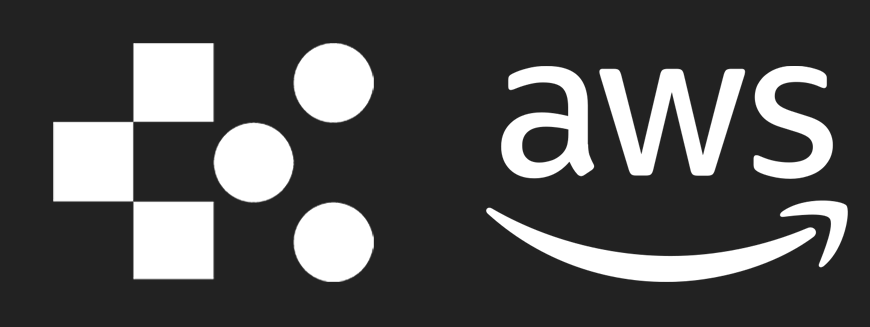AWS Network Firewall Deployment Models Explained
Explore AWS Network Firewall deployment models to balance cost, security, and performance while ensuring compliance for UK businesses.
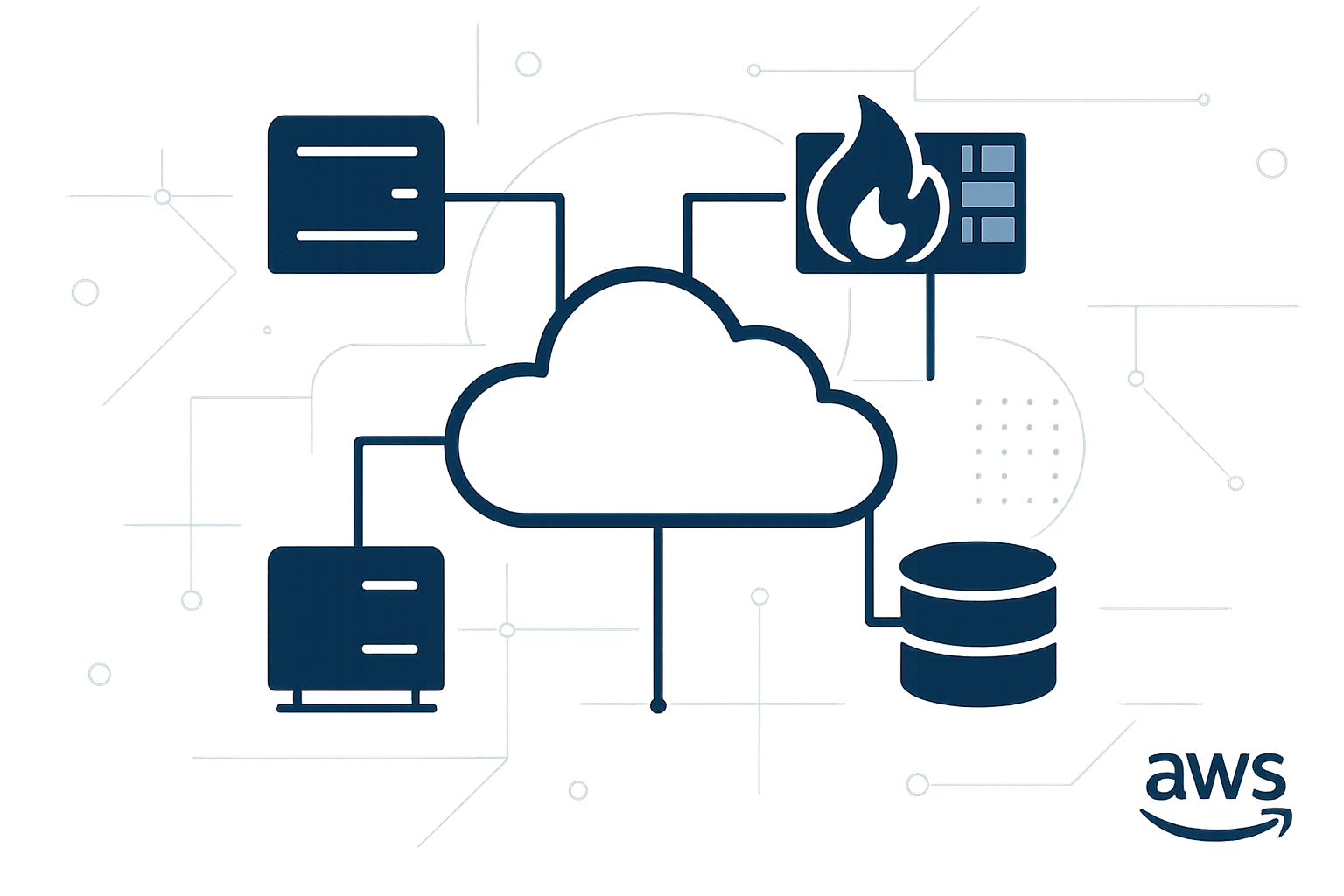
Looking for the best way to secure your AWS cloud infrastructure? Choosing the right AWS Network Firewall deployment model is key to balancing security, cost, and performance. Here's a quick summary of the three main options:
- Per-VPC Deployment: Best for tailored security within individual VPCs. Offers strong isolation but higher costs due to multiple endpoints.
- Transit Gateway Deployment: Centralises firewall management for interconnected VPCs. Simplifies operations and reduces costs but may introduce slight latency.
- Combined Deployment: A hybrid approach for businesses with diverse workloads. Balances centralised and distributed security needs.
Quick Comparison:
| Aspect | Per-VPC Model | Transit Gateway Model | Combined Model |
|---|---|---|---|
| Cost Efficiency | Higher with multiple VPCs | More cost-effective | Balanced costs |
| Management | Decentralised, complex | Centralised, simpler | Moderate complexity |
| Performance | Low latency, local control | Slight latency increase | Flexible routing |
| Compliance | Individual audit trails | Centralised logging | Hybrid approach |
For UK businesses, aligning with GDPR and managing costs effectively is crucial. Learn how each model supports compliance, scales with growth, and fits your operational needs.
AWS re:Inforce 2023 - Firewalls, and where to put them (NIS306)
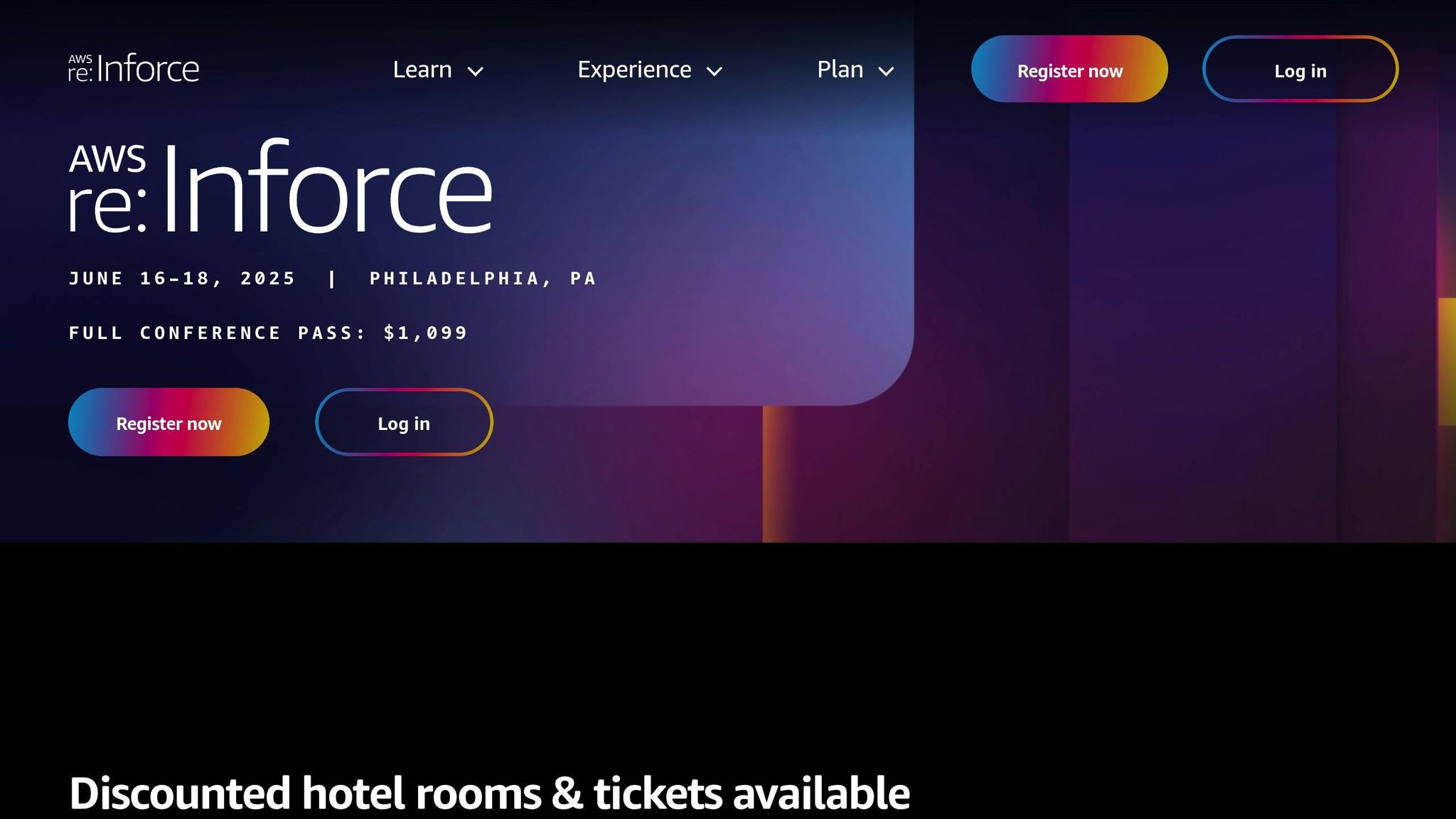
AWS Network Firewall Basics
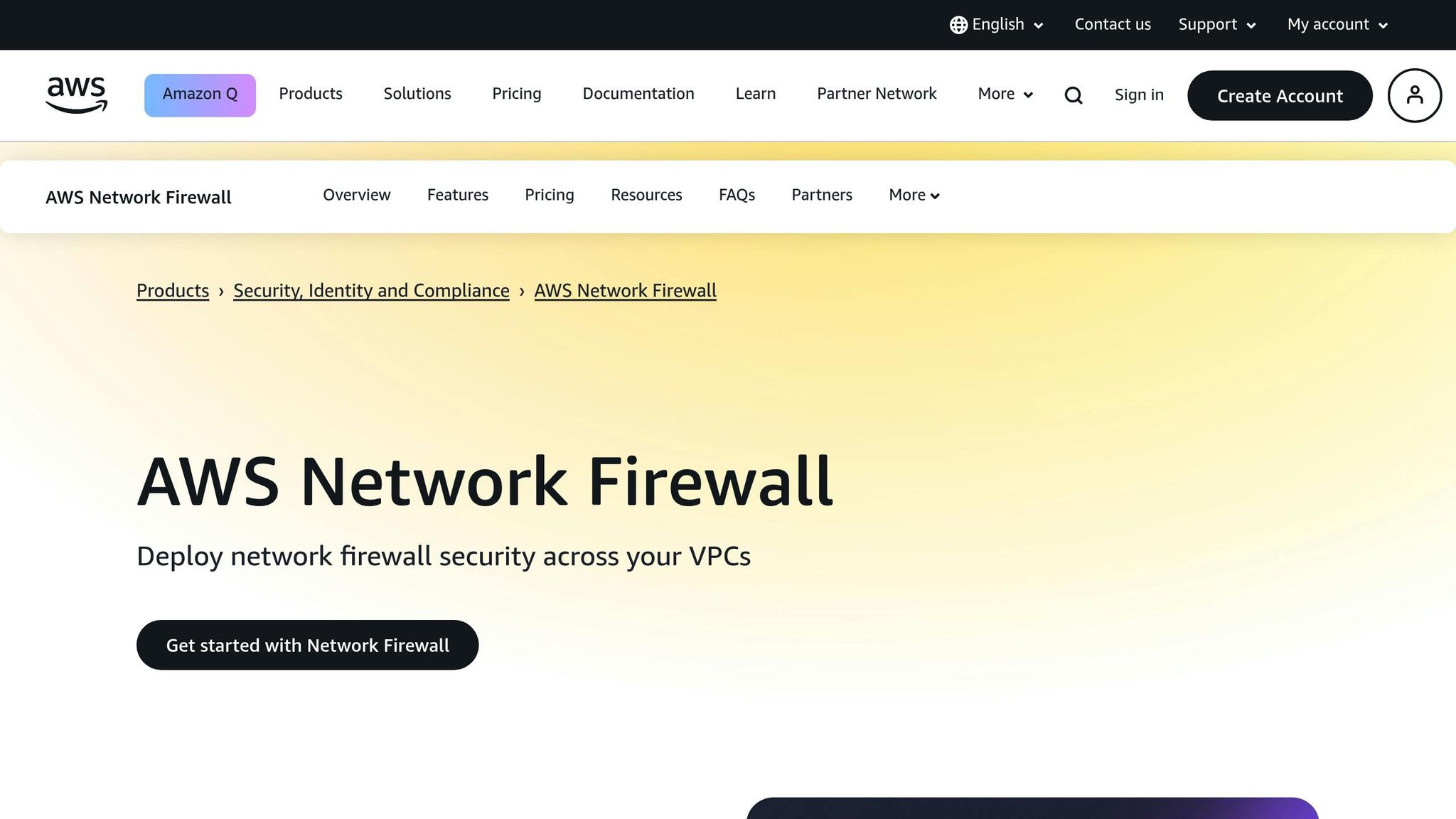
AWS Network Firewall offers managed, resilient security to protect your VPCs. Understanding its core components is essential before diving into deployment options.
Endpoints and Rules
Firewall endpoints are deployed in specific subnets within designated Availability Zones. These act as the main checkpoints for inspecting both inbound and outbound traffic.
AWS Network Firewall uses two types of rule groups to manage traffic:
Stateful Rule Groups:
- Monitor entire connections to provide deeper insights.
- Support domain filtering, protocol analysis, and deep packet inspection.
Stateless Rule Groups:
- Focus on filtering individual packets.
- Operate at the network and transport layers.
- Quickly filter traffic based on IP addresses and ports.
VPC Route Integration
AWS Network Firewall works seamlessly with your VPC routing setup, giving you the ability to direct traffic through firewall endpoints. Configuring route tables is a key step in this process, ensuring that traffic flows through the necessary security checks. Routing typically involves three main components:
- Ingress Routing: Incoming traffic is routed through firewall endpoints before reaching your resources. This ensures external traffic is inspected for potential threats.
- Egress Routing: Outgoing traffic is directed through the firewall endpoints before leaving your VPC, maintaining consistent security for all outbound communications.
- Inter-VPC Traffic: For environments with multiple VPCs, routes can be customised to enforce security policies on traffic moving between them, creating a secure boundary for inter-VPC communication.
This routing integration not only enhances traffic control but also ensures robust security measures without sacrificing network performance. It sets the stage for the deployment models that follow.
3 Main Deployment Models
Firewall deployment strategies are designed to address different operational needs, each with its own strengths and considerations.
Per-VPC Deployment
The Per-VPC deployment model involves setting up dedicated firewall endpoints within each Virtual Private Cloud (VPC). This approach offers detailed control over network security at the individual VPC level.
This model works particularly well when different teams or applications require tailored security policies. For example, a financial services VPC might demand stricter security measures compared to a development environment. Since each firewall instance operates independently, policies can be customised with precision.
Here are some key aspects of Per-VPC deployment:
- Direct control: Teams manage their own firewall rules, enabling quicker updates.
- Resource isolation: Any security breach is confined to the affected VPC, minimising broader risks.
- Compliance: Regulatory requirements can be addressed more easily for specific workloads.
- Cost: Running multiple endpoints can increase overall expenses.
While Per-VPC deployment provides decentralised control, the Transit Gateway model takes a more centralised approach to security management.
Transit Gateway Deployment
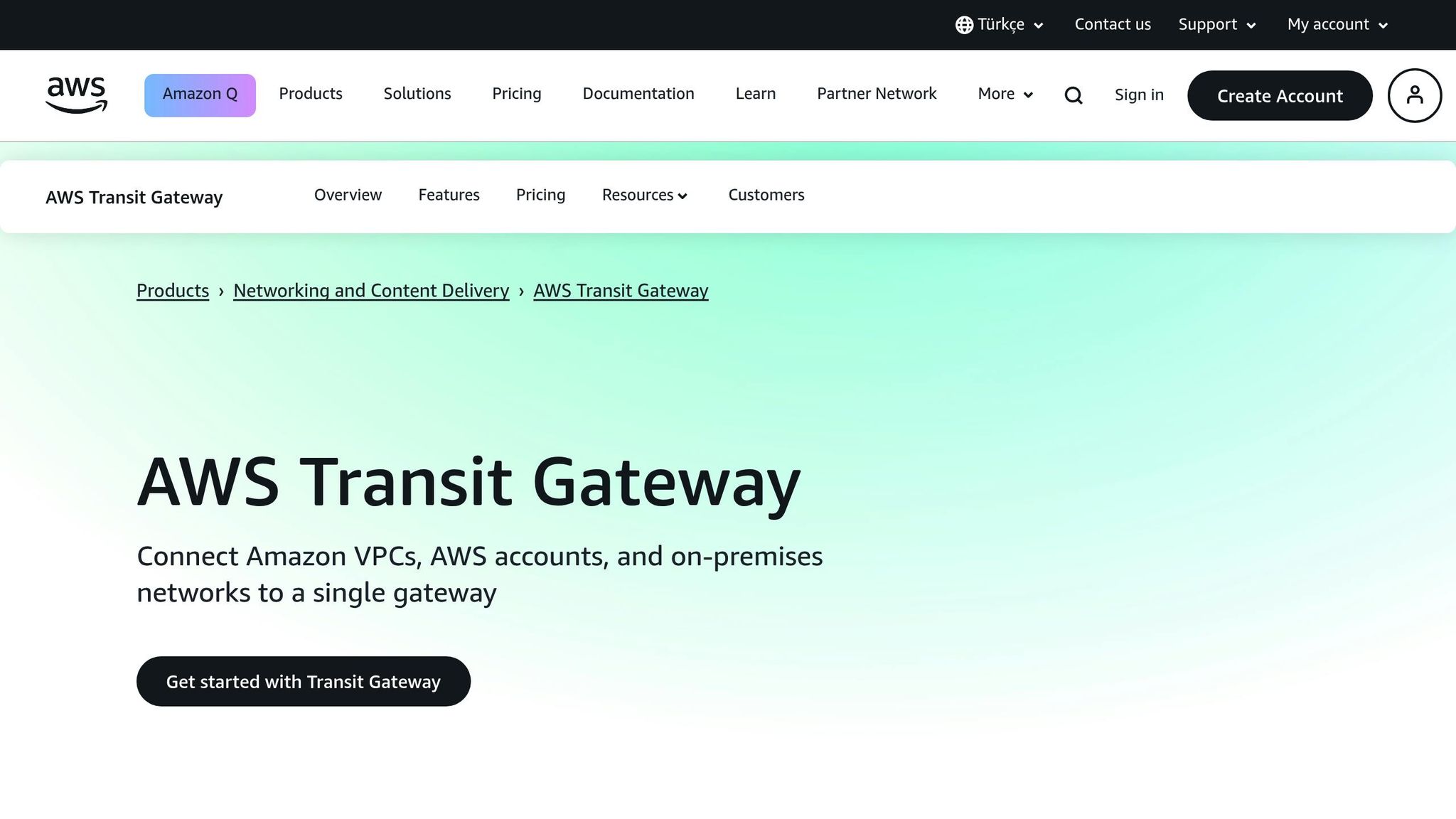
The Transit Gateway deployment model centralises firewall management by routing inter-VPC and external traffic through a shared AWS Network Firewall instance. This setup simplifies security administration and reduces complexity.
It’s a good fit for organisations with interconnected VPCs that share standardised security requirements. By consolidating management, this model offers several benefits:
- Lower management overhead: Policies can be updated from a single control point.
- Minimal latency impact: While there may be a slight increase in latency, it’s typically negligible.
- Cost efficiency: Centralising firewall resources can reduce overall costs.
- Simplified updates: Policy changes are easier to implement across the network.
For organisations that need both centralised and distributed control, a hybrid approach offers the best of both worlds.
Combined Deployment
The Combined deployment model blends centralised and distributed strategies, providing flexibility to meet diverse security and operational demands. It’s ideal for organisations managing mixed workloads or varying security requirements.
In this setup, inter-VPC traffic might be managed through a Transit Gateway firewall, while dedicated firewalls handle internet-facing workloads or specialised applications. This hybrid approach ensures each use case is addressed appropriately.
Key considerations for a Combined deployment include:
- Balancing varied needs: Aligning security measures with specific workload requirements while maintaining efficiency.
- Documenting traffic flows: Clear records of traffic paths are essential for effective management.
- Efficient resource use: Allocating resources effectively across business units.
- Consistent policies: Ensuring uniform enforcement across different deployment types.
Each model has its strengths, and the choice depends on the organisation's specific security needs and operational priorities.
UK Business Requirements
For UK businesses, navigating the balance between strict regulatory requirements and cost efficiency is essential when deploying AWS Network Firewall. The choice of deployment model - whether Per-VPC, Transit Gateway, or a Combined approach - depends heavily on local compliance obligations and pricing considerations. Below, we outline the critical factors to help shape your deployment strategy.
UK Data Protection Rules
When deploying AWS Network Firewall, it's crucial to align with the UK GDPR and the Data Protection Act 2018. Key compliance measures include:
- Detailed audit logging: Ensure comprehensive logs are available for regulatory reporting.
- Network segmentation: Safeguard sensitive workloads by isolating them effectively.
- Encryption protocols: Use encryption methods that meet UK security standards.
These measures not only support compliance but also strengthen overall data security.
UK Pricing Structure
AWS Network Firewall operates on a pay-as-you-go pricing model in the UK, with costs calculated in GBP. Charges cover endpoint usage, data processing, and monitoring metrics. The deployment model you choose will significantly impact costs, with resource consolidation often leading to notable savings.
To explore tailored cost-saving strategies for small and medium-sized businesses, check out AWS Optimisation Tips, Costs & Best Practices for Small and Medium Sized Businesses.
UK Market Examples
In industries like financial services, healthcare, and the public sector, UK organisations customise their AWS Network Firewall deployments to align with both regulatory demands and budget constraints. By selecting deployment models that address specific industry regulations and operational needs, these businesses achieve the dual goals of robust security and cost efficiency.
Choosing Your Deployment Model
When deciding on the right AWS Network Firewall deployment model, it's essential to balance your network requirements, security priorities, and future growth plans. Factors like cost, performance, and ease of management play a critical role in this decision.
Model Comparison
Each deployment model comes with its own set of benefits and challenges. Here's a breakdown of how they compare in terms of cost, management, performance, and compliance:
| Aspect | Per-VPC Model | Transit Gateway Model | Combined Model |
|---|---|---|---|
| Cost Efficiency | Higher costs with multiple VPCs | More cost-effective for large deployments | Balanced costs with selective deployment |
| Management Complexity | High due to managing multiple VPCs | Centralised management simplifies operations | Moderate complexity |
| Performance Impact | Local inspection with low latency | Potential bottlenecks if not scaled well | Flexible based on traffic routing |
| Compliance Support | Individual audit trails | Centralised logging and monitoring | Hybrid approach |
Growth and Speed Impact
While security is a primary concern, network performance and scalability are equally crucial when selecting a deployment model. For expanding networks, the Transit Gateway model offers a streamlined way to onboard new VPCs and enforce consistent policies. This makes it particularly useful for businesses experiencing rapid growth.
To assess your growth needs, consider these factors:
- The balance of traffic between East-West (within the network) and North-South (in and out of the network) flows.
- How many VPCs you plan to scale to in the future.
- The sensitivity of workloads to latency.
These considerations can help you identify the model that best supports your operational and performance goals.
Reducing Costs
You can maintain strong security while keeping expenses under control by focusing on these cost-saving strategies:
- Analyse traffic patterns to ensure firewall endpoints are appropriately sized for your needs.
- Route only critical traffic through inspection points to reduce unnecessary processing.
- Leverage AWS monitoring tools to identify and act on optimisation opportunities.
For businesses in the UK, the AWS for SMBs blog provides detailed, region-specific advice on cost optimisation. Check out their guidance at AWS for SMBs for more insights tailored to your needs.
Summary
AWS Network Firewall deployment models provide UK businesses with tailored ways to secure their cloud infrastructure, catering to different requirements. The choice among Per-VPC, Transit Gateway, and Combined deployment models plays a crucial role in determining both security outcomes and overall costs.
The Transit Gateway model is ideal for centralised control and offers a cost-efficient option, while the Combined model strikes a balance between diverse security demands and cost management.
To ensure success, deployments need to be implemented correctly and actively managed. For more detailed advice on optimising AWS Network Firewall deployments specifically for UK small and medium-sized businesses - including regional considerations and cost-saving tips - check out AWS for SMBs.
Key factors to keep in mind include:
- Operational Efficiency: Assess the management effort and your team's expertise when deciding between centralised and distributed setups.
- Cost Management: Account for both direct expenses, like firewall endpoints, and indirect ones, such as training and administrative time.
- Scalability: Opt for a model that supports your future growth without requiring major rework of your architecture.
Ultimately, your deployment model should meet your current security requirements while preparing you for future expansion.
FAQs
How does selecting an AWS Network Firewall deployment model impact compliance with UK GDPR and the Data Protection Act 2018?
The way you deploy AWS Network Firewall can significantly impact compliance with UK GDPR and the Data Protection Act 2018. This is because your deployment choice determines how sensitive data is monitored, processed, and secured within your cloud setup. For instance, opting for a distributed deployment model might give you finer control over network traffic and data flows, which can help address specific compliance needs. That said, achieving compliance isn't just about the deployment model - it also hinges on how the firewall is configured, managed, and integrated into your broader security framework.
To stay on the right side of data protection laws, your deployment should reflect key principles like data minimisation, confidentiality, and accountability. It's a good idea to work closely with legal and cloud security professionals to customise your configuration in line with UK-specific regulations.
How can I balance cost efficiency and security when choosing between Per-VPC, Transit Gateway, and Combined deployment models for AWS Network Firewall?
When deciding between the Per-VPC, Transit Gateway, and Combined deployment models for AWS Network Firewall, it's crucial to balance both cost and security needs. Each model is designed for specific scenarios, so understanding your network's structure and traffic flow is a must.
- Per-VPC Model: This option works well for smaller networks or when each VPC requires its own tailored security policies. It provides detailed control but can become expensive due to the need for multiple firewalls.
- Transit Gateway Model: This model is ideal for managing security centrally across several VPCs. It simplifies management and can reduce costs in larger, interconnected setups. However, it could create a single point of failure, which needs consideration.
- Combined Model: This hybrid approach blends the benefits of the other two models, offering flexibility for more intricate networks. That said, it demands more detailed planning and can be complex to implement effectively.
To strike the right balance between cost and security, think about factors like the volume of expected traffic, how many VPCs you have, and whether centralised or decentralised control suits your needs better. For small and medium-sized businesses, exploring AWS cost-saving strategies and best practices can help ensure growth without unnecessary spending.
How can businesses in the UK optimise their AWS Network Firewall deployment to ensure scalability and robust security?
How to Optimise AWS Network Firewall Deployment for UK Businesses
When setting up AWS Network Firewall for your business, it's crucial to choose a deployment model that matches your specific needs. If your organisation requires network security across multiple VPCs or regions, a distributed model is the way to go. On the other hand, businesses looking to centralise security management in a single location might find a centralised model more effective.
To ensure your setup can handle growth, take advantage of AWS auto-scaling features. These allow your architecture to adapt to increasing traffic without manual intervention. Keep a close eye on usage patterns to refine your approach as needed. For cost-conscious businesses, regularly reviewing firewall rules and configurations is key to avoiding unnecessary expenses.
Security remains a top priority, so adopting best practices is essential. This includes conducting regular audits, encrypting sensitive data, and staying proactive about potential vulnerabilities. These steps will help your business maintain strong protection as it expands.
For additional support, small and medium-sized businesses can explore AWS resources designed to enhance cost management, improve performance, and streamline automation. These tools can provide further insights into optimising your AWS services effectively.
